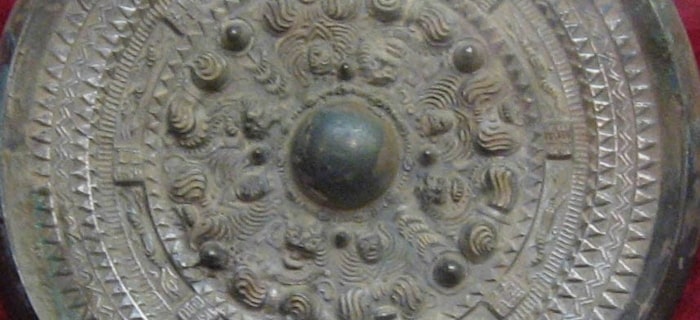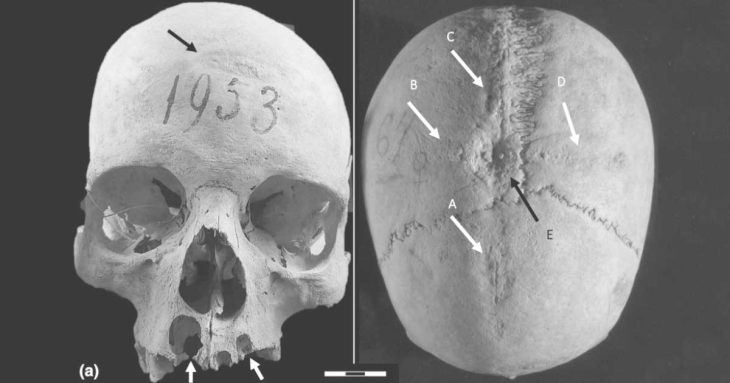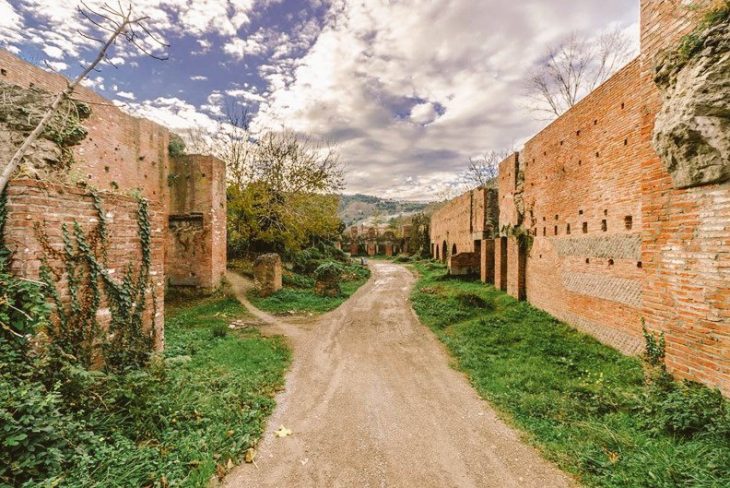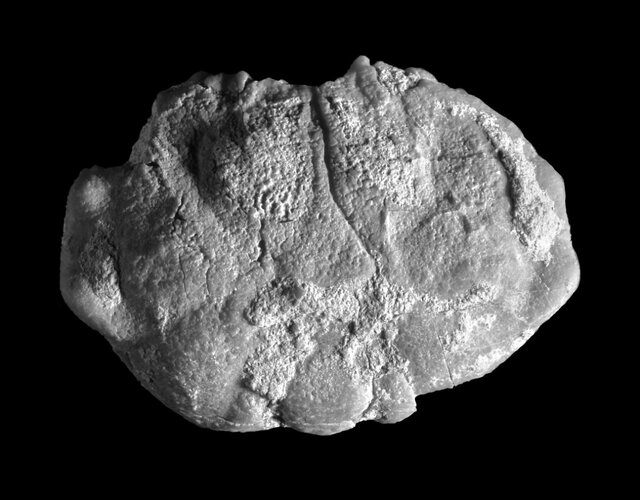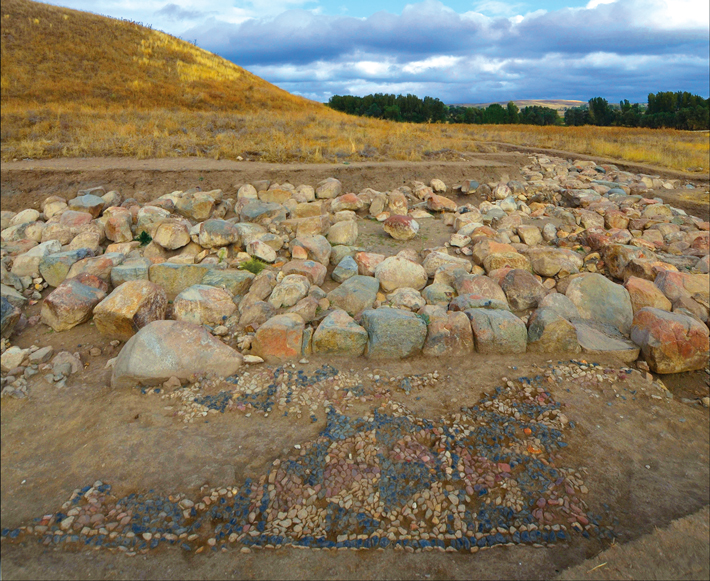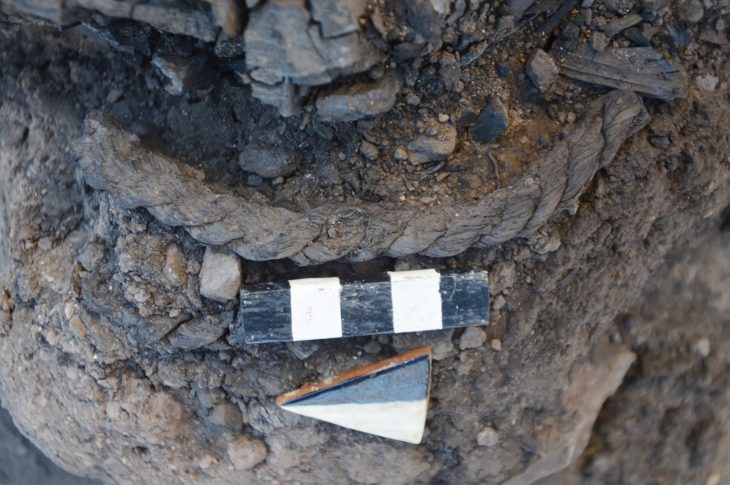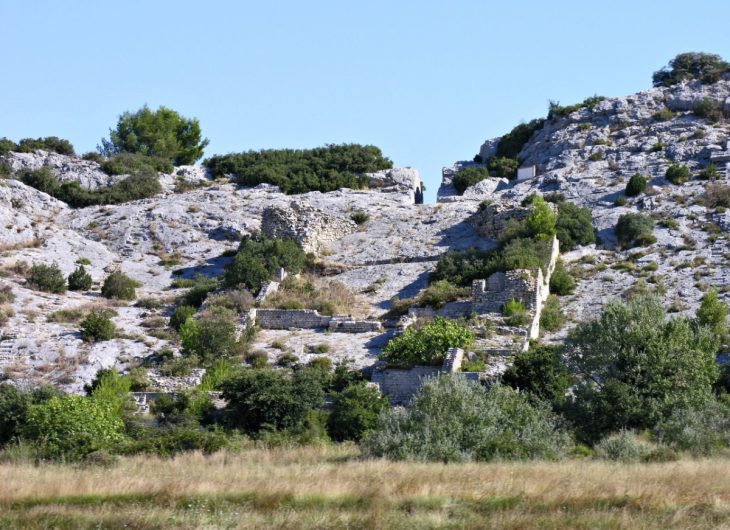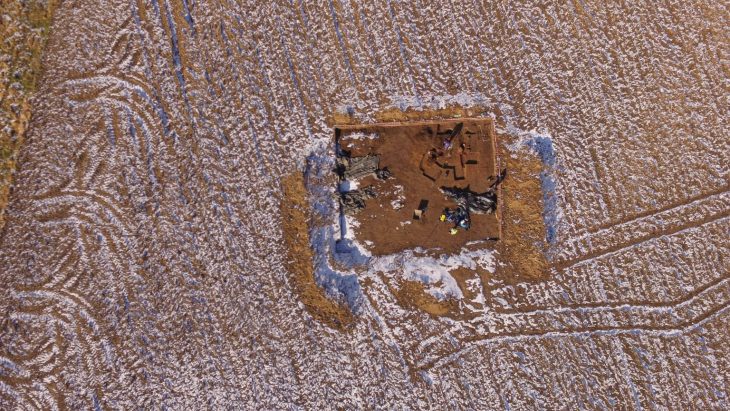Archaeologists in Japan have unearthed more than 100 ancient bronze mirrors from the Sakurai Chausuyama burial mound in Sakurai, Nara Prefecture.
Sakurai Chausuyama Kofun is a huge keyhole-shaped mound constructed at the beginning of the early Kofun period (250 AD–552 AD) located in Sakurai City, Nara Prefecture. It is also called Tobi Chausuyama-kofun Tumulus.
This tumulus is a 207-meter-long Ekagami-shiki tumulus (hand mirror-type keyhole-shaped mound) with the hand mirror-shaped front square part located on the left bank of the Hasegawa River abutting the Iware region. The site is designated as a “historic site” by the central government.
The scale of the finds indicates the occupant of the tomb wielded immense power and perhaps had royal status, archaeologists say.
The finds turned up an array of mirrors, including what are known as “Himiko’s mirrors” that have a triangular rim and are adorned with images of gods and animals, according to the prefecture-run Archaeological Institute of Kashihara here.
Himiko is the name of a queen in early third-century Japan, according to ancient Chinese history texts.
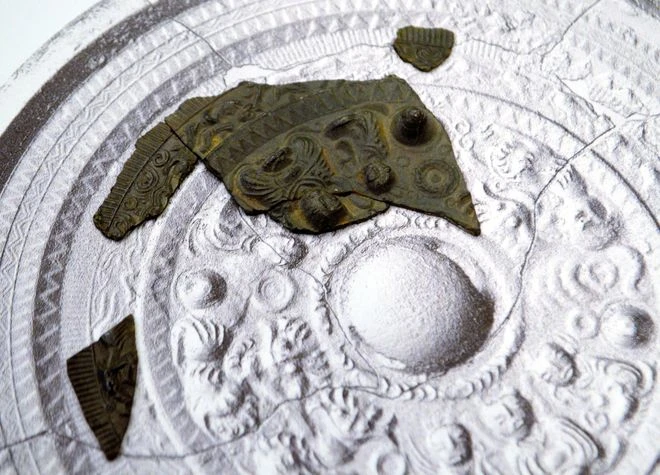
Some of the pieces had been made in the same mold as Sankakubuchi Shinjukyo mirrors, which are engraved with Seishi Gannen (in the Japanese reading), a period name of Wei-dynasty China, meaning the first year of the Seishi era, or 240.
Himiko, a female ruler of the Yamatai-koku kingdom, is said to have received 100 mirrors from the Wei dynasty in that year….
A semi-legendary figure, Himiko is curiously absent from Japanese historical records but does appear briefly in Chinese histories. Himiko was noted for being a shaman queen, unmarried, and living in a fortress where she was served by 1,000 women. According to some sources, Himiko ruled an area referred to as Yamatai, the location of which remains in dispute.
Over the years, excavations at the Sakurai Chausuyama burial mound, which some believe to be a royal tomb from the early Yamato State, have uncovered a total of 385 fragments of bronze mirror.
In 2010, the prefectural archaeological institute released the results of a study that attributed the finds to 81 bronze mirrors, in excess of the 40 mirrors, then a record, found at Tomb No. 1 of the Hirabaru archaeological site in Itoshima, Fukuoka Prefecture.

As some of the fragments remained unidentified, a group of researchers re-examined the finds from the Sakurai tomb.
According to measurements in three dimensions and comparisons with bronze mirrors discovered abroad and in other parts of Japan, the discoveries are equivalent to at least 103 bronze mirrors, setting a new Japan record, officials said on September 7.
The mirrors are of 14 types and comprise 26 triangular-rimmed mirrors carrying images of gods and animals, 56 China-made mirrors in 10 designs, and 21 Japan-made mirrors of three varieties. Many of them–with the majority having come from China–are large and decorated with elaborate patterns, the officials added.
“The finding shows the central power of the kingdom was more powerful than we might ever have imagined,” said Shinya Fukunaga, an Osaka University professor of archaeology who is an expert on bronze mirrors. “It could change our understanding of the political structure of the Yamato State.”
The latest research results will be presented at Tokyo’s Yurakucho Asahi Hall on Oct. 8.

